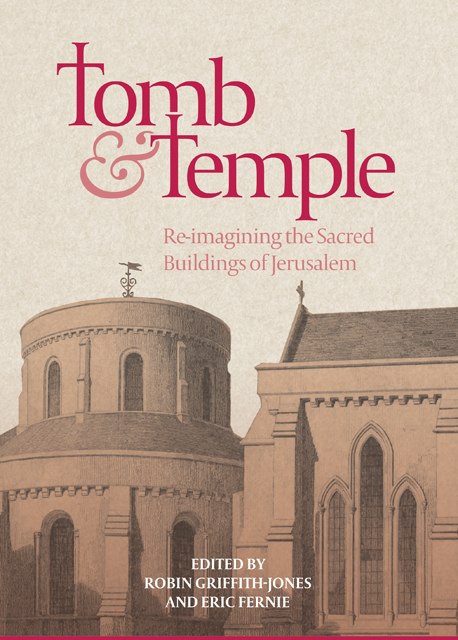Book contents
- Frontmatter
- Contents
- Illustrations
- Preface
- Contributors
- Abbreviations
- Editors’ Note
- Introduction
- Part I Re-presenting Jerusalem
- Part II The Church of the Holy Sepulchre
- Part III The Noble Sanctuary / The Temple Mount
- Part IV The Orthodox Churches
- Part V Round Churches in the West
- Appendix: The Knights’ Effigies: Newly Discovered Drawings by John Guillim, c. 1610
- Epilogue
- Index
- Already Published
12 - Holy Russia and the ‘Jerusalem Idea’
Published online by Cambridge University Press: 17 January 2023
- Frontmatter
- Contents
- Illustrations
- Preface
- Contributors
- Abbreviations
- Editors’ Note
- Introduction
- Part I Re-presenting Jerusalem
- Part II The Church of the Holy Sepulchre
- Part III The Noble Sanctuary / The Temple Mount
- Part IV The Orthodox Churches
- Part V Round Churches in the West
- Appendix: The Knights’ Effigies: Newly Discovered Drawings by John Guillim, c. 1610
- Epilogue
- Index
- Already Published
Summary
The term ‘Holy Russia’ is well known, and may seem an irritating cliché; what’s so holy about Russia, after all? The term ‘Silly Sussex’ (‘silly’ from Old English saelig, meaning holy or happy) is similar – both lands were latecomers to the ‘holy family’ of Christian nations in their respective parts of the world. A large exhibition called ‘The Art of Holy Russia: Icons from Moscow, 1400–1660’ took place in Frankfurt and at the Royal Academy in London from 1997 to 1998, but nowhere in its bulky catalogue is the term ‘Holy Russia’ discussed or explained – rather, it is simply taken for granted. Yet this, and the linked ‘Jerusalemic’ concept to which we shall devote attention, is one of the most distinctive of Russian cultural spaces – far from coterminous with the Russian political space.
A brilliant investigation by Mikhail Cherniavsky in the 1950s, building on Solovyov, has demonstrated that the term (svyataya Rus) is first found in the mid sixteenth century as, probably, a play on words or verbal confusion with the expression svetlaya Rus (‘Bright Russia’), known centuries earlier. It became current from the Time of Troubles, c. 1600, and seems to have taken on an ideological dimension – referring to a certain national spirit within the Russian people as a whole, irrespective of (and often contrary to) any given ruler or dynasty. For a people to consider its land ‘holy’ is, of course, no rarity; the concept is known from biblical times. In Russia, as Daniel Rowland has well shown, a tradition of commenting on current events through Old Testament parallels goes back to the first years after the Conversion in the later tenth century, and remained powerful through the Muscovite period – and among schismatics later still. Why one nation, at some historical juncture, should strive for the designation ‘holy’ and others not, is an interesting but elusive psychological or ideological question that we shall not try to answer here. In Russia, anyhow, not only was the concept deep-rooted, popular and long-lasting, but it expressed itself in literal manifestations that aimed to sanctify the physical space of the Russian land, and led to an unparalleled series of buildings, objects, sound-worlds and landscapes created over a considerable time span.
- Type
- Chapter
- Information
- Tomb and TempleRe-imagining the Sacred Buildings of Jerusalem, pp. 233 - 254Publisher: Boydell & BrewerPrint publication year: 2018



